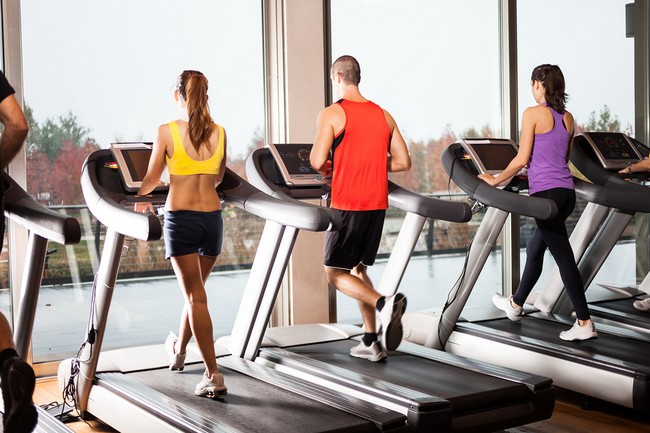- Make It Yourself Lavender Heart-Shaped Bath Bombs!
- 20 Things You Never Knew About “Down There”
- 12 Best Foods For Those Suffering From Arthritis Pain
- 12 Personal Hygiene Mistakes Almost Everyone Makes (Mom Never Told You About #4!)
- 15 Medicinal Plants And Herbs From The Cherokee People
- 12 Mind-Blowing Benefits Of Drinking Coconut Water During Pregnancy
- 12 Outstanding Winter Foods That Won’t Fatten You Up Like A Christmas Turkey
7 Things You Aren’t Paying Attention to When You Run
It’s a strange but true fact; people don’t like to pay attention to their running when they run. We don’t mean things like where they are going, how far they are planning on running, or when to turn around, no, we mean many people don’t want to solve the problems of the universe, or even their problems at work, when they are running. Many folks turn up the tunes and kinda zone out once they hit their stride. Ask them what they were thinking about the answer you will most likely get is, “I don’t know. I don’t remember.”
Occasionally you will find a runner who will tell you that they were noticing the time because they wanted to shave a minute off their 5K or they wanted to see if they could continue for one more mile without stopping. However, there are times when a runner simply must pay attention. Not to a watch, but to your body.

There is a place to help you do just that. The Running Performance Program at New York University’s Langone Medical Center. In order to learn how your body works, and how efficiently (or painfully) it moves.
There are a multitude of experts at the Performance Program everything from physical therapists, exercise physiologists, even registered dieticians. They are there to assess your running from every possible angle. Their goal? To make everyone who loves to run, whether you are an Olympic hopeful or a newbie, a more efficient, healthier runner. They will observe and analyze everything about your running form and then provide personal recommendations such as strength programs or custom orthodontics.
After filming you from every possible angle, then watching and analyzing the film, the professionals say they often find many of the same 7 problems with runners. Things that most runners never pay attention to but they really should. Here are the 7 things the experts at RPP say you should be paying attention to when you run.
1. Hips
Have someone make a video of you running from the back (or arrange a camera on your own), then watch it in slow-motion. After you finish laughing at what you look like from behind, pay attention to your hips and pelvis. A normal, healthy runner’s pelvis will drop about five to seven degrees. Any more of a drop than that means you are at a much higher risk for injuries such as hamstring strain or IT band syndrome.
SEE ALSO: 15 Reasons to Run
2. Arm Swing
Of course if your hips are off balance or are dropping more than 7 degrees , you may notice that you will try to make up for it by swinging your arms in a not-so-normal way to make up for it. A normal swing is like a hand to the pocket kind of swing. The longer your run, the more energy you are expending by trying to hold your arms up and out, or swinging them with longer strides than normal. Runners always want to hold the most streamlined posture possible.
3. Pronation and Supination
If you run, you have probably heard of pronation or supination of the feet. It’s an inward or outward motion of your feet, and runners will chose supportive shoes to avoid the injuries cause by overuse. Although some pronation and supination are normal, some people pronate very quickly. Again, watching the video of how you run will help you pay attention to things you never before saw.
4. Placement of Your Feet
You may have heard all the talk about foot strike, the part of the foot that hits the ground first, and what this means for injuries, such as knee pain, for those who run excessively. Another point to consider, however, is how far away your foot is from your body when you first make contact with the ground. If you are what is called Close to the Center of Mass (COM) then you’re doing well. But if you are too far from your body, this means you are working harder and can possibly lead to a multitude of injuries. Ideally, you don’t want your foot to cross over the center line of your COM. So imagine that you are running along that pretty yellow line in the middle of a road ( no cars, of course) So if you are running efficiently, no more than 25 percent of your heel width would cross over that yellow line.
INTERESTING! Lower Back Pain by Sport
5. Steps Per Minute
Otherwise known as cadence. Perfect cadence would be about 180 steps per minute or more. Less than that means you are placing more force on the body, which can lead to some serious knee pain. Strange as it may seem, taking more steps can help you limit injuries.
6. Vertical Displacement
To make this short but simple, look at it this way: if you want to cover as much ground as you can in as little time as possible, then you want the majority of your energy to push your forward. Therefore, any energy you spend pushing yourself upward is, well, as waste of energy.
Experts call this vertical displacement. Your ideal vertical displacement is 8 centimeters or less. If you feel you might be above this, try pushing yourself forward with your glutes, rather than lifting yourself up by the hip flexors.
YOU MAY ALSO LIKE: 5 Super Easy Exercises that Make Fat Disappear
7. Your Weight
When we say your weight we mean in relation to your running shoes. You have most likely heard that you should replace your shoes every 300 to 500 miles. However, that number will actually change depending on your weight. Use this equation instead: divide your body weight (in pounds) by 75,000. Then divide that number by the number of miles you run each week. This is the number of weeks you can wear those running shoes before they bite the dust.
Of course, every runner is different and you might already be aware of the things mentioned here. If you want to know more, however, there are RPP centers all around the United States or you could simply have a friend use their phone and make a video of you from behind and analyze your own video. Look for those knees that are moving inward or feet that excessively cross your midsection.
Paying just a little bit of attention to how your body moves as you are running, can make a big difference in your life.
Source:

































